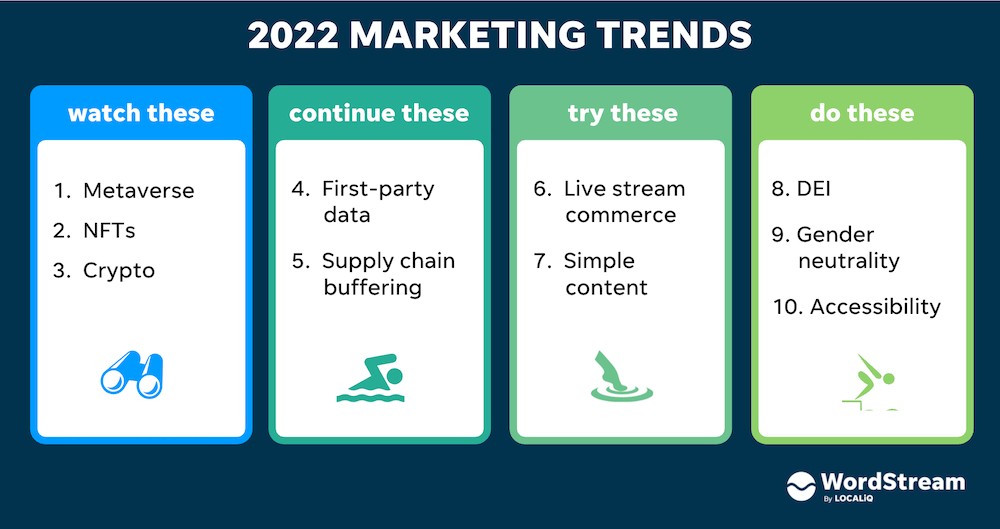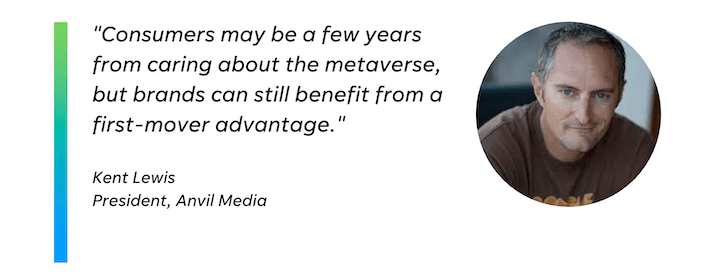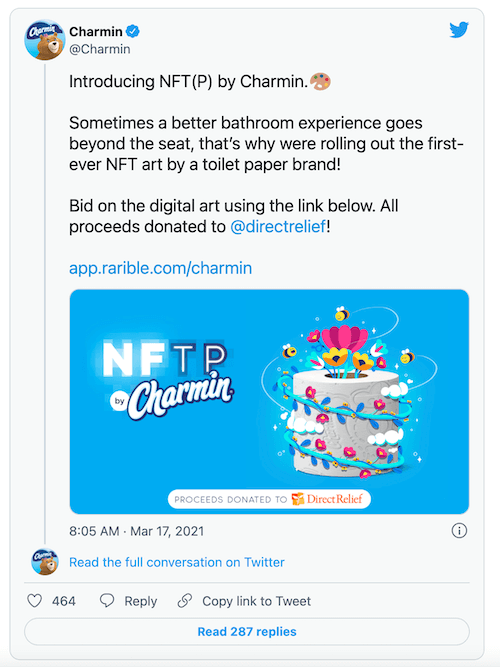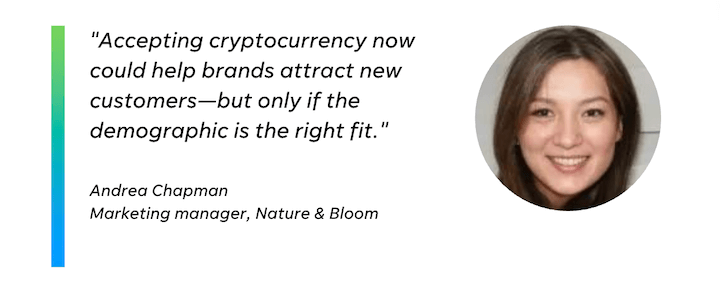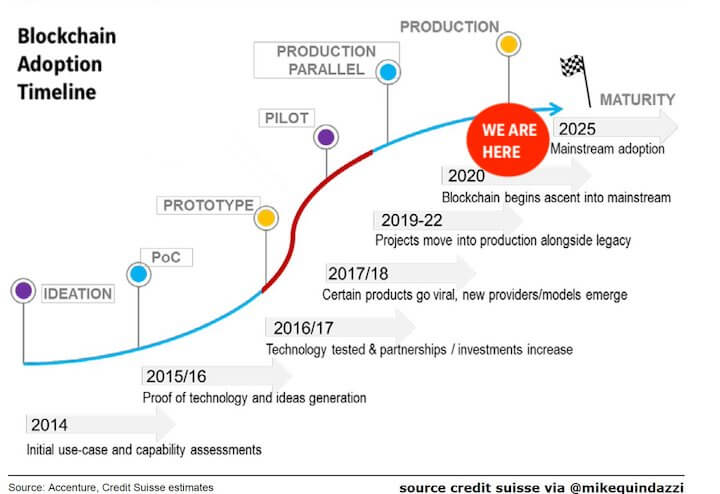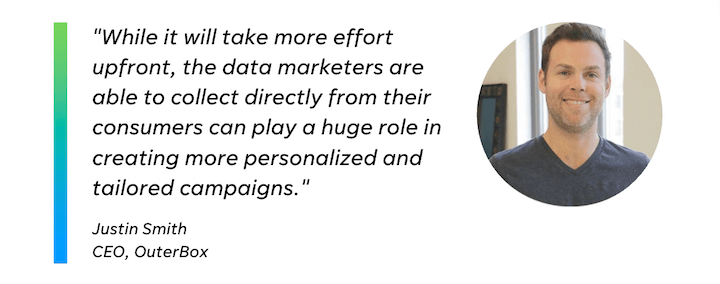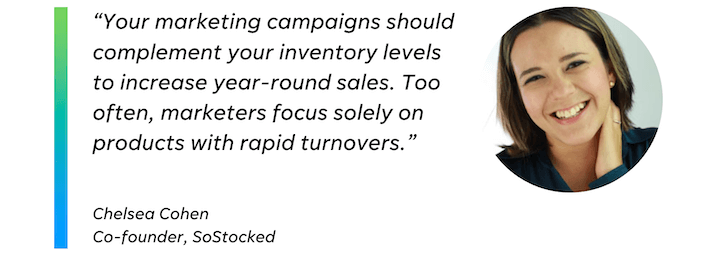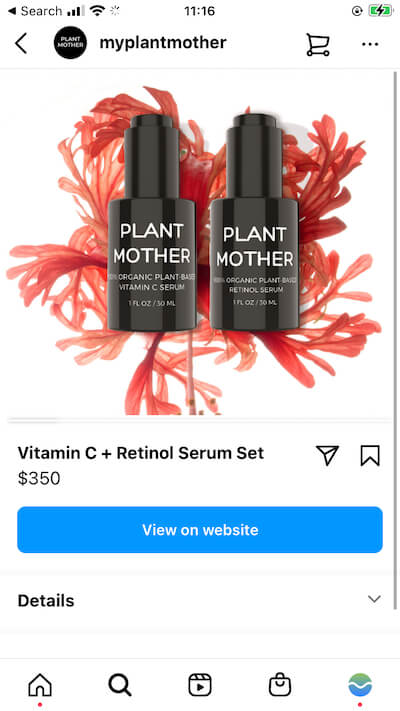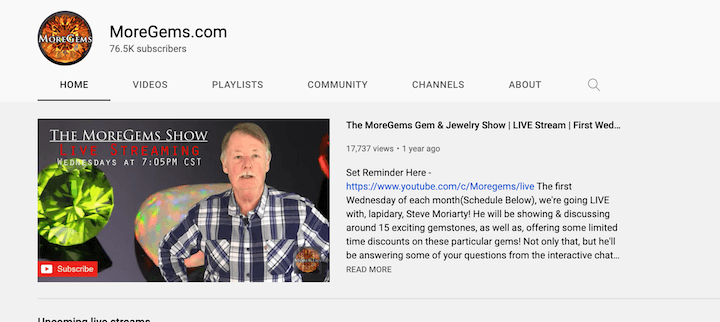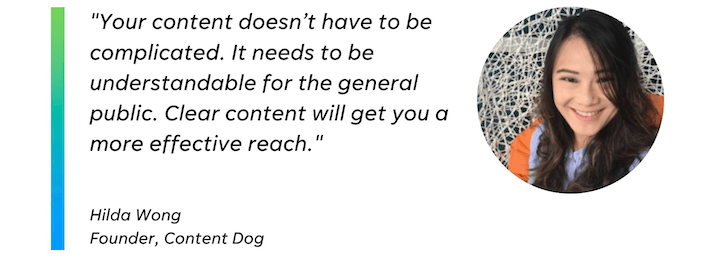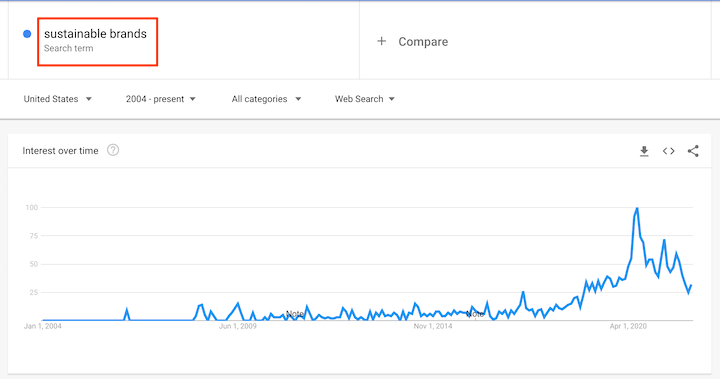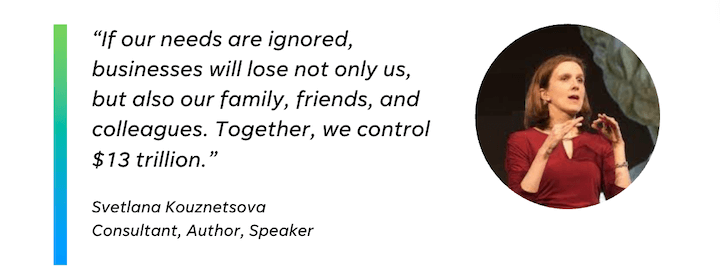What is SEO? Search engine optimization is an effective way to attract consumers to your online platforms — if you use it right. SEO is constantly evolving, and staying on top of the latest updates can be a challenge. However, it’s worth the effort: Some 70% to 80% of users focus exclusively on organic results and ignore paid listings. What’s more, some 28% of those searches convert, resulting in a purchase.
Top-ranking SEO performance requires attention to many metrics, including traffic, backlinks, and social shares — to name just a few. Our guide gives you insights into some of the most relevant and timely search engine optimization trends to anticipate for 2022, allowing you to prepare your SEO strategy accordingly. Let's dive into the 12 SEO trends to watch for in 2022.
1. Artificial Intelligence Will Play a Larger Role in SEO
Artificial intelligence (AI) is changing how people interact with online content. Google’s AI algorithm is especially worth noting. Unveiled a few years back, the algorithm — called RankBrain — plays an important role in Google’s ranking factors for search engine results pages (SERPs) results.
Greg Corrado, a senior Google scientist who helped develop RankBrain, has previously highlighted the tool’s unique ability to learn: “The other signals, they’re all based on discoveries and insights that people in information retrieval have had, but there’s no learning.” This presumably means that RankBrain will only improve with time, making AI a top SEO trend to watch.
So, the big question is, how do you optimize your SEO for RankBrain? While the search engine giant won’t share details, experts believe that user experience signals are the primary determinant. These could include factors from click-through rate to time spent on page. You need to captivate and engage readers with useful, well-organized content. An on-page SEO checker can help you assess page strength based on points like readability, backlinks, and more.
2. Voice Search Will Impact Search Queries
Thanks to innovations like Google Assistant, Apple’s Siri, and Amazon’s Alexa, voice search technology has come a long way. As technology has gotten better, it’s also gotten more popular. In fact, the percentage of households predicted to own a smart speaker by 2022 is 55%.
To optimize for voice search, consider your keywords. Identify longer phrases that people use in everyday conversation. Voice searches tend to do better with longer, more natural-sounding phrasing. When people type, they tend to abbreviate. For example, a person might voice search, “What are the new SEO trends for 2022?” but type the words, “new SEO trends 2022.”
3. Mobile-Friendliness Will Impact Search Rankings
In 2019, Google rolled out mobile-first indexing, meaning the search engine looks primarily at the mobile version of a website, considering this the “primary” version instead of the desktop version. This change makes sense, given that nearly 73% of internet users will access the internet solely via mobile devices by 2025. Check how effective your mobile site is with Google’s free mobile-friendly test. Next, take a peek at the “mobile usability” report in Google Search Console.
To make sure your page is user-friendly, you have to ensure that Google can crawl your URLs, so make sure you don’t have a “disallow directive” in place. Also, beware that Googlebot won’t load content requiring user interactions, like clicking or swiping. You have to make sure Google can see this so-called lazy-loaded content. Finally, ensure you use the same meta robots tags on the desktop and mobile sites.
4. Content That Fulfills the Google EAT Principle Will Rank Higher
Google has reiterated that content quality is critical for ranking success. But just what does “quality” mean to Google? Refer to the EAT principle: expertise, authoritativeness, and trustworthiness. These factors help determine if a webpage has useful quality content. This principle is especially relevant in business niches that fall under the “your money, your life” (YMYL) label, such as health care and finance.
There are a few ways you can ensure quality content. First, create buyer personas, which let you understand what kind of content your clients value. Second, conduct search intent research, which helps you map out the consumer journey. Third, use this information to create content that fits the format that your users prefer. For example, if you’re catering to teens, video is probably preferable. If you’re catering to an older audience, video may be less appealing.
Finally, keep EAT in mind as you craft your content. Back up claims with statistics and facts. Link to reputable sites, such as “.edu” and “.gov” URLs. Having authoritative sites link back to you is another way to prove that you fulfill the EAT criteria.
5. Long-Form Content Will Help Improve SERPs
According to our State of Content Marketing Report, long reads of 3,000-plus words get three times more traffic and four times more shares. They also achieve 3.5 times more backlinks than articles of the average length of 901 to 1,200 words. Start focusing on long-form content to achieve higher search rankings. That said, your content must maintain quality. The aim is to provide users with shareable information that keeps them engaged.
How do you achieve this? First, break up your content into sections with H2 and H3 subheadings to make it more scannable. Subheadings are especially important for mobile sites. Second, ensure that you link to relevant, authoritative sources with a solid authority score. Finally, ensure your content is easy to share. Include obvious sharing links at the headline and again at the conclusion so that readers can share with a quick click.
Our SEO Content Template Tool can help optimize your content for search. Enter the query you want to rank for, and you’ll get recommendations on content length, semantically related keywords to include, and a closer look at the top-ranking pages.

6. Featured Snippets Will Become More Prominent
Don’t panic. You won’t have to generate long-term content exclusively if you want to climb the Google rankings. Featured snippets, which were rolled out in 2017, are a sort of shortcut to gaining prominence in Google — and they’re very brief. Sometimes, when you type something into Google, you may notice a box at the top of the SERPs, above the actual results. That’s a snippet.

Scoring a featured snippet is a great way to get on that coveted first page of results. What’s more, snippets steal significant traffic from competitors.
Featured snippets show a chunk of information, often structured as a Q&A or brief bullet-point, how-to guide. There are also rich snippets, including images, star-based reviews, product prices, and similar bits of information. To create snippets, focus on question-based queries and relevant keywords. You can use the Google search function “ people also ask” for inspiration.
7. Predictive Search Is Set to Improve
Google Discover was launched in 2017, unleashing a new kind of search — one that doesn’t even require a user query. Discover is another one of Google’s AI-driven tools. The content recommendation tool identifies user behavioral patterns over time and gradually learns these habits. With this information, Discover can identify the most accurate content most likely to interest the user.
Google Discover already claims more than 800 million active users. To appear, you don’t have to do anything special. If Google indexes your page, it will be included. Content is ranked based on algorithms inspecting content quality, and user interest. Although Google has communicated no precise factors, it seems that location history, browsing history, app usage, calendars, search history, and home and work locations are all relevant.
8. An Effective SEO Strategy Will Need to Include Video
Online video seems to be the way forward. YouTube has more than 1 billion users. If you aren’t creating video content, now is the time to get started. Not convinced? Here’s food for thought: According to Cisco, video is projected to surpass all other content forms in terms of consumption.
How can you optimize that video content, though? Make sure to optimize your video channel name and description. The description shouldn’t just be crammed with keywords but provide a user-friendly overview of what your channel is about.
Beyond this, keywords are crucial. For example, if you’re optimizing for YouTube, you can get inspired by the platform’s auto-complete feature. Start typing in your video's topic and see what pops up in the search field, which is essentially a list of suggested keywords, telling you precisely what people on YouTube are searching for.
9. Image Optimization Will Play a Larger Role in Search
Visual image search has evolved drastically. It used to be that people could just look at images. In the future, people will be able to use images to purchase products, obtain information, and more. Google has long insisted on the proper marking and optimization of images, so it makes sense that this is part of their long-term plan.
If the images on your website aren’t optimized, take care of it now. Use high-quality, relevant images, and make sure to customize the file name, labeling the photo file so that it’s relevant to the content on the corresponding page. Use alt tags, which crawlers use to classify images. Finally, add images to your site map, where they are even easier to crawl. You can check out other posts where we discuss image SEO for more tips, too.
10. There Will Be More Importance Placed on Semantically Related Keywords
SEO professionals used to focus on primary keywords as if they had blinders on. Now, we know secondary keywords are just as important. Semantic search and intent optimization will gain further prominence in the future. Google isn’t just looking at strings of words anymore. It’s analyzing query context and trying to discern a user’s search intent, meaning that the more relevant information provided — via logically related primary and secondary keywords — the better.
We offer a comprehensive keyword tool to identify semantically related keywords and keyword difficulty to prioritize which queries you want to target first.

To truly address the semantic search, create content designed to answer a question that your target audience would pose. Optimize content for topic clusters instead of focusing solely on keywords. Finally, use structured data when logical. Most importantly, don’t write for bots but people.
11. Local Search Listings Will Play a Larger Role in SEO Strategies
When people think of the internet, they often think of its global nature. The fact is, most people use search engines to find localized goods and services. They might be hunting for a neighborhood restaurant, for example. Local SEO is important — and it’s evolving. This evolution is in part because of the rise of zero-click searches — which some SEO marketers are dubbing the new normal.
In a zero-click search, the user’s query is answered via the SERP itself. They thus don’t click on any of the ranking results. One reason for the rise in zero-click searches is the increase of featured snippets. Many zero-click searches are local searches that show the results on the SERP in what’s been dubbed a “local pack.”
How do you get your business into that local pack? Start by creating a Google My Business page. Having a strong backlink profile is also important. You can check what kinds of backlinks your competitors get for inspiration and target those yourself.
12. Data and Analytics Should Become Your Priority If You Want to Remain Ahead in Rankings
Data science lets you understand buyers, visualize campaigns, and create targeted messages. Analytics can help you verify which URLs are getting crawled, identify referral sources, check page loading times, indexing, redirects, response errors, bounce rates, and more. You can also use data science to identify pages that you do not want crawlers indexing and pinpoint unusual traffic sources, such as potential spam sites (which will hurt your EAT credibility).
How do you capture all of this information? There are many SEO industry analysis tools out there. The SEMrush SEO Toolkit gives you the technology you need to tackle everything, from rank tracking to competitive research, on-page SEO, technical SEO, link building, and more. Staying on top of these details lets you see where you are succeeding and, just as importantly, failing. This method lets you address problems and continuously improve your web presence.
Learn More About the Latest SEO Trends and Techniques
SEO is only getting more complex, as the above list makes clear. The days of simply optimizing keywords and meta titles are long gone. With SEO’s current trends, you have to think about everything from voice control to video SEO. Metrics are constantly changing, and it’s critical to stay on top of your place in the rankings. The right SEO tools can help you get the information you need to guide a smart SEO strategy.
